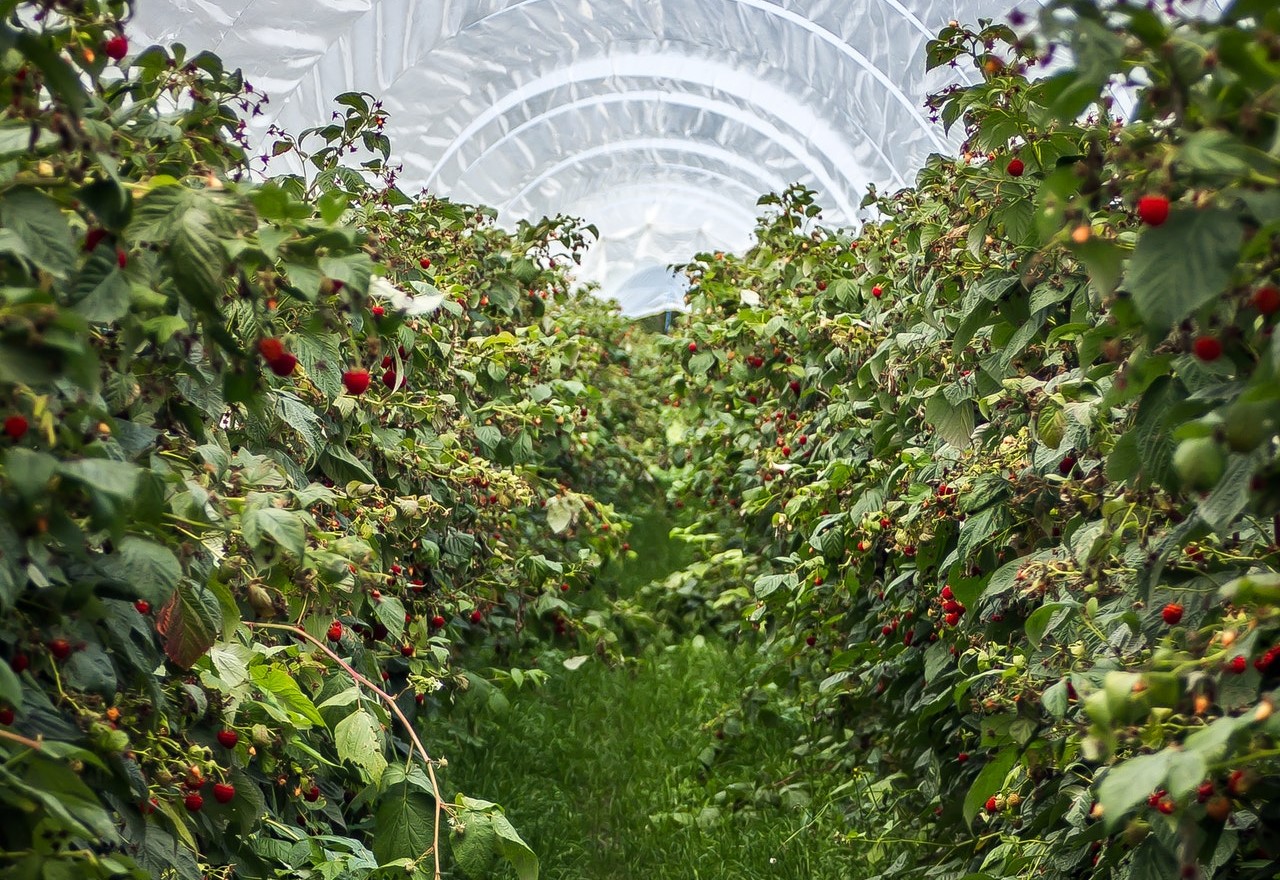Establishing a raspberry plantation consists of several elements, including soil preparation, herbicide use, and irrigation.
Growing raspberries is relatively simple due to the fact that seedlings are easily produced. Raspberries bear fruit quickly, already in the second year, and in the third year, they can give a full yield. The production itself lasts from 10 to 15 years.
The above-ground parts of the plant live only for two years. A shoot develops from the underground stem in the first year, and the summer shoot (one-year-old shoot) bears fruit in the second year. On the summer shoot, buds develop in the leaf axils, usually two, but sometimes three. In the second year, a fruiting branch that bears flowers and fruits develops from the upper bud.
Due to this growth pattern and the desired high number of shoots, it is necessary to carry out pruning properly. Cultivation is considered complete in the first year after planting.
At the beginning of the growing season, after planting, shoots emerge from the buds of the shortened seedlings. When the shoots have grown to a length of 10 cm, the two to three most developed ones are selected, and the others are cut back to the base.
In the first year, special attention must be paid to the care of the plantation. The soil must be impeccably cultivated to prevent weed growth. Fertilization and plant protection are essential. Also, if the support structure was not erected at the beginning of the year, it should be set up in the autumn or early spring of the following year.
Soil Preparation
If soil moisture permits in March, soil preparation is combined with fertilizer application. Shallow cultivation follows in mid-April and early May before flowering. After the harvest, and in the autumn, manure and mineral fertilizers are plowed in as basic fertilization.
Herbicide Application
Raspberries are very sensitive to weeds, particularly quackgrass. If soil cultivation is not possible, e.g., in bush cultivation, weeds can be controlled using herbicides. Herbicides should not be applied in plantations younger than four years.
Irrigation of Raspberries
Maintaining a raspberry plantation would not be possible without irrigation. Due to frequent dry periods in the continental part of Croatia, shoot growth can stagnate during the summer months. To prevent this, sufficient water must be provided through irrigation.
The most common form of irrigation is the drip system, which can also be used for fertigation, i.e., the application of various fertilizers in solution form. This irrigation system is the most suitable due to its efficiency and the elimination of the possibility of disease through leaf wetting.
Raspberries require a larger amount of water, both during the growing season and harvest. Irrigation beyond actual needs is not recommended, as excessive soil moisture can lead to certain diseases.
From flowering to the end of harvest, 2.5 liters of water per running meter is suggested, and during ripening, 3 liters, in two irrigation sessions per day.













































